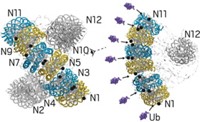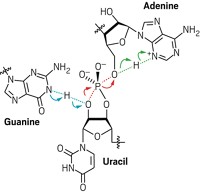Advertisement
Grab your lab coat. Let's get started
Welcome!
Welcome!
Create an account below to get 6 C&EN articles per month, receive newsletters and more - all free.
It seems this is your first time logging in online. Please enter the following information to continue.
As an ACS member you automatically get access to this site. All we need is few more details to create your reading experience.
Not you? Sign in with a different account.
Not you? Sign in with a different account.
ERROR 1
ERROR 1
ERROR 2
ERROR 2
ERROR 2
ERROR 2
ERROR 2
Password and Confirm password must match.
If you have an ACS member number, please enter it here so we can link this account to your membership. (optional)
ERROR 2
ACS values your privacy. By submitting your information, you are gaining access to C&EN and subscribing to our weekly newsletter. We use the information you provide to make your reading experience better, and we will never sell your data to third party members.
Synthesis
DNA Repair Job Gets Inspected
April 28, 2008
| A version of this story appeared in
Volume 86, Issue 17
With the help of a clever cross-linking strategy, chemists at the University of Chicago have determined why one repair protein sticks to fixing up double-stranded DNA damaged by alkylation, whereas its relatives prefer mending single-stranded DNA (Nature 2008, 452, 961). Bacterial AlkB and its human cousin ABH2 both repair alkylated DNA, but no one had been able to sort out why these proteins prefer different DNA substrates. Chuan He and coworkers now present an answer to this mystery based on the crystal structures of AlkB and ABH2 coordinated to a double-stranded DNA bearing an alkylated base. He's team stabilized the weakly interacting DNA-protein complexes via a disulfide cross-link. The structures reveal that ABH2 (right, green), which prefers to repair double-stranded DNA, flips the damaged base (pink) out of the DNA helix (gold) and into its active site while plugging the resulting gap in the DNA with an aromatic phenylalanine "finger." In contrast, AlkB (left, green) dramatically distorts the DNA when it flips the damaged base into its active site. He suggests that AlkB's distortion tactics may account for its preference for single-stranded DNA, which is less rigid than double-stranded DNA.






Join the conversation
Contact the reporter
Submit a Letter to the Editor for publication
Engage with us on Twitter